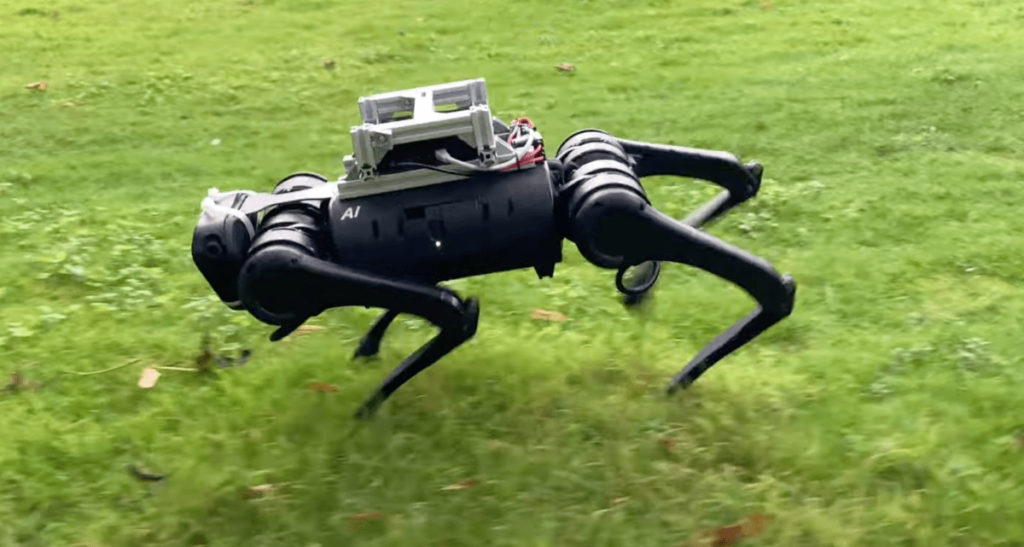
Watch this four-legged robot adapt to tricky situations like an animal
Researchers at the University of Leeds have successfully demonstrated a framework for a quadruped robot that can navigate complex environments, maintain stability on uneven ground, and recover after a fall – all without relying on extra-perceptive sensors. The innovative design is inspired by the bio-mechanics of four-legged animals.
The impressive capabilities of this robot allow it to adapt to tricky situations in a manner reminiscent of its animal counterparts. This means that the robot can change direction mid-stride, recover from unexpected falls, and adjust its trajectory to avoid obstacles.
One of the key aspects of the robot’s design is its ability to learn from experience and improve its performance over time. This self-learning capability allows it to adapt to new situations and environments, making it an incredibly versatile tool for a wide range of applications.
The team behind this project has demonstrated the potential of their technology by showcasing the robot’s impressive abilities in various challenging scenarios. From navigating rough terrain to avoiding obstacles, the robot has shown that it can keep up with its animal inspirations.
This innovative approach could have significant implications for industries such as search and rescue, environmental monitoring, and even entertainment. The ability to create robots that can navigate complex environments without relying on expensive sensors or complex programming opens up new possibilities for a wide range of applications.
The full potential of this technology has yet to be realized, but it’s clear that researchers at the University of Leeds have made significant strides in creating a robot that can adapt to tricky situations like an animal.
Source: techcrunch.com


